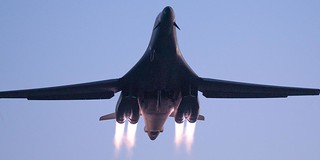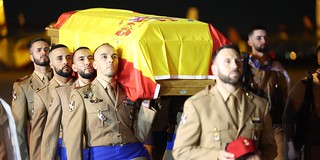Crisex 83, a huge military exercise with the US against a possible invasion of Spain
Between October 31 and November 8, 1983, during the Cold War, some important maneuvers took place in southern Spain.
The exercise, called Crisex 83, gathered 10,000 Spanish soldiers and 3,000 US soldiers, the contingent being much smaller than expected, since 9,000 marines could not join these maneuvers when they were mobilized by two very recent events: the Islamist attack perpetrated on October 23, 1983 against the Multinational Force in Lebanon in Beirut, in which 307 people were assassinated (among them 241 US soldiers) and the invasion of Grenada on October 25, 1983, as a response of an international coalition to the pro-Soviet coup in that Caribbean country.
Crisex 83 was based on the assumption of an invasion of Portugal by an enemy force, which would end up penetrating Spain in the direction of Cáceres, Badajoz and Seville. The exercise was part of a series of biannual maneuvers that began in 1979, and included the participation of units of the US Navy 6th Fleet and the US Air Force, including strategic bombers Boeing B-52G Stratofortress and McDonnell Douglas F-15 Eagle fighters.
On behalf of Spain, the Infantry Regiment "Pavía" no. 19 FAMET, a unit of the Paratrooper Brigade (BRIPAC) and the the Army Air Mobile Forces (FAMET); the Tercio de Armada (TEAR) and the Amphibious Group of the Fleet and the Combat Group of the Navy; and the Alert and Control Wing, as well as aircraft from the Air Force Combat Air Command (MACOM), among other units.
About the 40th anniversary of this enormous exercise, you can see below some photos of it that I found in the National Archives of the United States.

A Spanish LVTP-7 amphibious armored vehicle (today known as AAV-7) of the Tercio de Armada on Matalascañas beach, in Huelva, where disembarkation maneuvers took place during this exercise (source: NARA).

A USAF North American Rockwell OV-10 Bronco light attack and observation aircraft , deployed at the Morón Air Base during this exercise (source: NARA).

Spanish soldiers of the Tercio de Armada in the landing operation in Matalascañas (source: NARA).

An M-48A5E2 tank from the Army in Matalascañas, during the exercise (source: NARA).

Another Spanish M-48 tank, in this case an M-48A3E from the Company of Cars of the Amphibious Mechanized Group (today the Third Mechanized Landing Battalion, BDMZ-III) of the Tercio de Armada (source: NARA).

A US Army Sikorsky UH-60 Black Hawk helicopter in ambulance version in low-flying in Matalascañas during this exercise (source: NARA).

The disembarkation of a Spanish M-48A3E tank of the Tercio de Armada Car Company on the beach of Matalascañas (source: NARA).

A Spanish Bell UH-1H helicopter from the FAMET flying next to a column of M-113 armored personnel carriers from the Spanish Army (source: NARA).

A USAF Boeing B-52G Stratofortress strategic bomber deployed at the Morón Air Base during this exercise (source: NARA).

The crew members of an M-113 armored vehicle from the Spanish Army during this exercise. The machine gun is a 12.7mm Browning M-2. The US National Archives misclassified this photo as being of an M-48 tank (source: NARA).

Spanish soldiers of the Tercio de Armada during the landing in Matalascañas. In the photo we see two of the landing craft for mechanized means (LCM) of American origin that the Spanish Navy had at the time, the LCM-15 and the LCM-17 (source: NARA).

A USAF F-15 Eagle fighter deployed at the Morón Air Base during that exercise (source: NARA).
|
Don't miss the news and content that interest you. Receive the free daily newsletter in your email: |
- Most read
- US F-35A fighters flying with Polish F-16s over Poland at a time of great tension
- The brutal 'touch and go' of a Lufthansa Boeing 747 at Los Angeles Airport
- The deployment of Spanish soldiers of the Regulars and BRILAT near Russian territory
- Eurofighter vs F-35: the opinions of professional pilots on these advanced fighters
- The firearms used by the Pontifical Swiss Guard, the smallest army in the world
- Sierra Army Depot, a huge United States base with hundreds of Abrams tanks stored
- An American airman used a Flag of Spain to direct a B-1B Lancer bomber

 ES
ES







Opina sobre esta entrada: